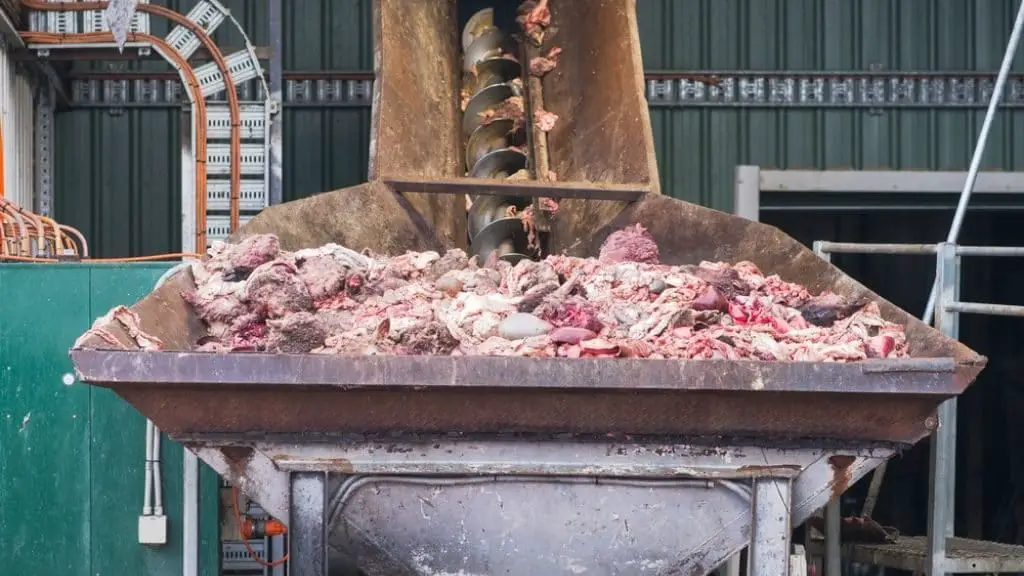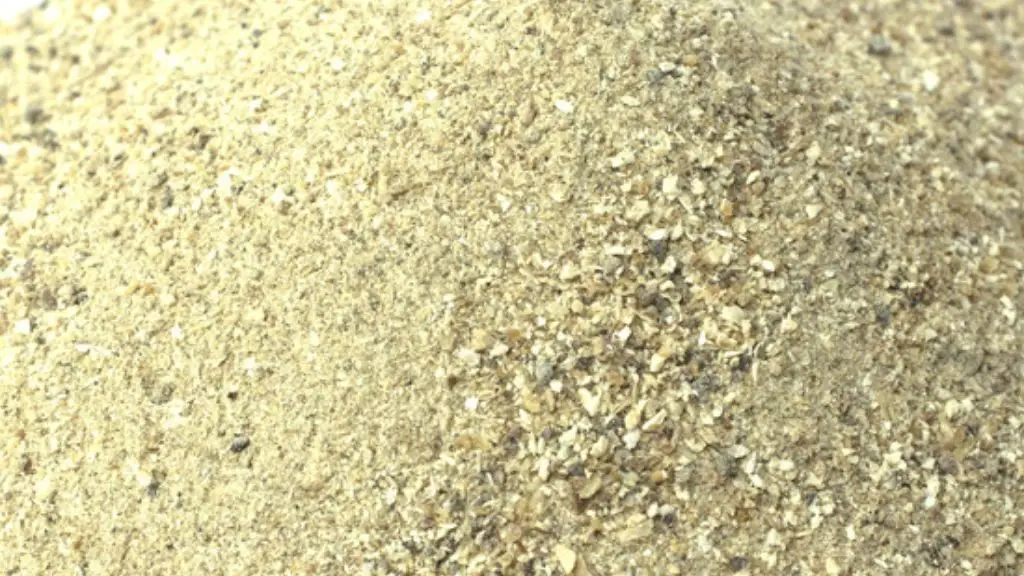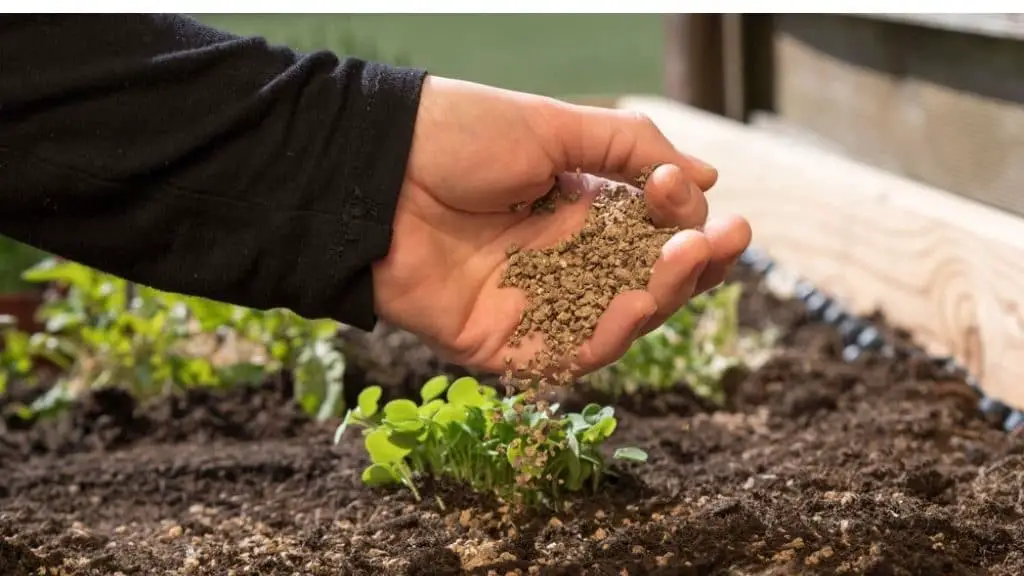How Much Bone Meal Per Gallon of Soil? Know Now!

As a gardener, you want your plants to grow big and strong. To achieve this, you have to supplement their nutrition with some form of fertilizer. So, we are going to tell you about an often-overlooked natural nutrient source-Bone Meal.
Bone meal is not only organic but also nutrient-dense. It mainly provides phosphorus, as well as calcium and nitrogen. For garden newbies, bone meal may appear scary because it is a little complicated to apply. You must know the exact amount to add for a better outcome. So, “how much bone meal per gallon of soil?”
Don’t worry, we have the answer you are looking for. Read on to know all about using bone meal for plants.
What is a Bone Meal?
As the name implies, bone meal is made from animal bones. Typically, this 100 percent organic fertilizer is made up of cow bones obtained from slaughterhouses. In addition to this, you can also add pork or fish bones. But you don’t use them randomly. Before you can use them as fertilizer, these bones are disinfected, boiled, and ground into a fine powder.

Bone Meal provides you with a sanitized, accelerated version of decomposition that is beneficial to your plants. By using bone meal, you’re simply providing your plants with the type of amendments they need. Depending upon the concentrations of different bones, bone meal powder color varies from white to a little brownish.
Benefits of Bone Meal
If you are thinking is bone meal good for Soil? The answer is yes, it is the best organic fertilizer. Bone meal is excellent for assisting plant growth. But the good times don’t have to end there! Adding bone meal to your garden will provide a slew of additional benefits, including:
- Increased fruit and seed production
- Newly emerging plants will have a stronger root structure
- Encourages lush, and healthy growth
- Aids in the prevention of pests and infections
- Encourages large, and lovely blooms
For flowering plants like roses and amaryllis, bone meal is an excellent organic fertilizer to use. It also helps alliums like garlic, leeks, and onions to grow faster. You can use organic bone meal in lawns because it aids in the rapid maturation of young plants. Moreover, it aids in the development of a denser root structure and offers calcium for the fruiting of tomatoes. Overall, it’s one of the things that most gardeners should have on hand!
How Much Bone Meal per Gallon of Soil? (Bone Meal Application Guidelines)
Test your soil for phosphorus requirements before adding bone meal. Otherwise, you risk overfertilizing your plants, which can harm or kill them. Agricultural universities and government offices in the area offer soil testing.
You can also buy a soil testing kit and do the test yourself. For this organic fertilizer to perform well, the soil must have a pH of 7 or below, in addition to the soil being phosphorus-deficient. If these requirements are fulfilled, then you must add bone meal.
If you are thinking about how much bone meal to add to Soil (One Gallon)? We recommend adding one tbsp. per two square feet of soil (almost 3 cups per 100 square feet). The amounts may vary depending on the brand, so always read the box to know how much bone meal per gallon of soil. Also, mix the fertilizer with the backfill dirt while planting.
Moreover, lightly moisten the soil after applying the bone meal so that it can begin to decompose quickly. People often ask us how to apply bone meal for grass. The answer is you can use 5 or 10 pounds of bone meal per 100 square feet of grass, depending on the sort of bone meal you bought. No matter what kind of bone meal you get, it will always be in powder form.

After knowing about how much bone meal per gallon of soil, let us discuss different application rates of bone meal.
How Much Bone Meal per Plant?
If you are thinking about how much bone meal per plant should I use? The basic rule is to use one pound of powder or pellets per 10 square feet of growing space, or about a tablespoon per planting hole if transplanting.
Add the recommended bone meal powder to the soil and then “mix” it in the soil with some stirring equipment. This not only brings the particles closer to the plant roots but also dilutes any remaining aroma that would attract hungry animals.

After that, water thoroughly to let the fertilizer go deeper into the soil.
You can also make a liquid bone meal. Now the question is how much bone meal per gallon of water? You should add 2 tablespoons of bone meal per gallon of water.
It is critical to apply this liquid bone meal around the base of plants. Roots quickly absorb the nutrients present in the liquid and plants grow quickly.
Here’s an example of vegetable, potted, and flowering plant regarding bone meal application!
Tomato plant
Tomatoes, especially in pots, are called “heavy feeders.” If you are thinking about how much bone meal per tomato plant should I use? We recommend for each indoor growing tomato plant, start with 1 heaping teaspoon of Bone Meal. You can sprinkle it into the soil (on the plant base).
Bone Meal is high in phosphorus, which your tomato requires to grow a lot of fruit. It also aids in the availability of calcium to the roots, which helps to prevent blossom end rot.
Potted plant
Bone meal is a well-balanced fertilizer mix that includes nitrogen, phosphorus, and potassium, the three macronutrients required for healthy plant growth. In standard containers, a mixture of one part blood meal, one part bone meal, and two parts ash works nicely.
For those who are thinking about how to use bone meal in potted plants? Experts recommend using 1/2 cup per cubic foot in potting soil. For the greatest results, do not just use a bone meal for potted plants. Always give an additional supply of potassium with a bone meal.
Rose plant
Bone meal is an excellent natural fertilizer for roses. It has a lot of phosphorus, which is like a lifeline for flowering plants. Moreover, adding bone meal reduces the fungi’s ability to colonize the rose roots. This helps roses grow stronger and more established.
Apply it into the soil twice a year to gain the benefits for your plant. Use only about 1 heaping tablespoon of bone meal for roses. It is good to sprinkle it around the rose bush’s base.
How Long does Bone Meal Last in Soil?
Bone meal can last for up to 4 months. Before sowing any seeds you can apply bone meal to the plant or anytime throughout the growing season from February to November.
If you apply Bone Meal before sowing of seeds, then its effect will last just before the flowering stage. So, it is important to re-apply bone meal before the beginning of flowering. This will lead to robust flowering and you will end up with the top quality fruits.
What Plants can I use Bone Meal on?
If you are thinking about which plants like Bone Meal?
Flowering Plants– Some flowering plants such as roses, tulips, dahlias, and lilies like bone meal fertilizer.
Vegetables- The bone meal is also beneficial to plants such as radishes, garlic, onions, and carrots, as well as other bulbs.
Bone Meal supply phosphorus, which is an important nutrient for plants to help them blossom and create strong roots, thus it’s helpful for root crops like onions, garlic, carrots, and parsnips.
Those plants (like legumes) that are involved in Biological Nitrogen Fixation don’t need a liquid bone meal.
Gardeners often compare it with Blood Meal. Some people think bone meal and blood meal are the same. Here’s what you need to know!
Bone Meal vs Blood Meal
Not surprisingly, people confuse bone meal with blood meal. But, there are two major differences. First, dehydrated blood is used to make blood meals. Second, blood meal mostly provides nitrogen rather than phosphorus.
Even though they are both animal products, the two are not interchangeable. Both promote plant growth, but each has its own set of advantages. Due to the nitrogen present in blood meal, plants experience robust vegetative growth. As phosphorus is present in bone meals, this nutrient is helpful in proper flowering.
Can You use Bone Meal and Blood Meal Together?
Bone meal and blood meal are both nutrient-rich soil additives that can be used together. A blood meal is dried and powdered animal blood that boosts nitrogen levels in the soil.
Bone meal is made out of ground animal bones that raise calcium and phosphorus levels in the soil. Small levels of magnesium, iron, zinc and other trace elements are also present in bonemeal. These micronutrients are also necessary for smooth plant growth.
How to Mix Bone & Blood Meal for Potting Soil?
Experts recommend adding 3 to 4 cups of blood meal and 4 to 5 cups of bone meal in the potting mix. Mix these dry ingredients with the garden hoe or any other equipment. Then, add around 1 gallon of water from the garden hose.
It’s critical that the mixture be moist but not soggy. Squeeze a handful of soil into the palm of your hand. The mixture is wet if it holds together. It’s too wet (soggy) if water oozes from the soil ball.
Wrapping Up
All-inclusive, adding organic fertilizers is a modern way of growing plants. One organic fertilizer the world is talking about is a Bone meal. people often confuse it with Blood meal, but we have explained the difference above in this article.
Be prepared to witness robust plant growth, enhanced flowering production, and top-quality fruit production after adding a bone meal. But you have to add it in the right quantity to see these results. People ask how much Bone Meal per Gallon of Soil and after hours of research we answered one tablespoon per two square feet of soil (3 cups per 100 square feet).
Follow the recommendations we have provided and enjoy High Plant Yield!
FAQs
How much bone meal do you add to the soil?
The basic rule for how much bone meal fertilizer to use is three cups per 100 square feet of soil. When working the bone meal into the soil, make sure to turn the soil well and properly mix it in so that no clumps or deposits of the fertilizer remain. If you are wondering how much bone meal per gallon of soil, read the article above to know.
Can you use too much bone meal?
Unlike blood meal, bone meal will not burn your plants if you use too much. People often ask us about how much bone meal per gallon of soil should I use to witness robust plant growth? We suggest adding 2 tsp per gallon. But, pH testing is critical since the bone meal will be ineffective if your soil has a pH of 7 or above.
How do you apply bone meal to the soil?
If you are thinking about how much bone meal per gallon of soil should I use? Experts recommend using 1/2 teaspoon and scratching it into the dirt beneath the plant. Always read the box directions first because the quantity may vary based on the brand. While planting, mix the fertilizer with the backfill dirt. Lightly moisten the soil after applying the bone meal so that it can begin to decompose. It will take around four months for the nutrients to be released.
How much blood and bone do you put in potting mix?
In the potting mix, add 3 to 4 cups of blood meal and 4 to 5 cups of bone meal to the wheelbarrow mixture. Using the garden hoe, thoroughly combine the dry ingredients. Mix the dry ingredients with the garden hoe after adding around 1 gallon of water from the garden hose. Keep one thing in mind that the mixture must be moist and not soggy.
Related Topics:








